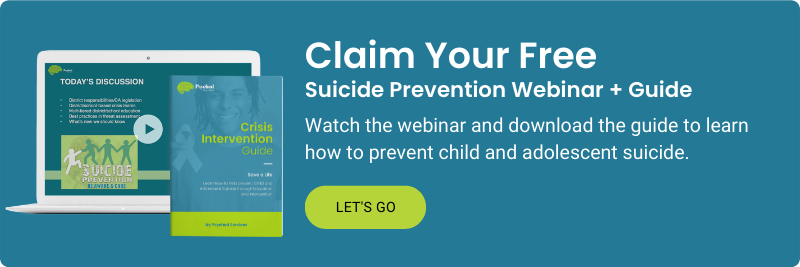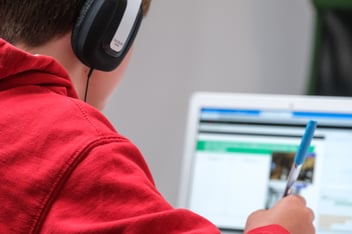
It is vital for all kids — not just those with exceptional needs — to practice their developing social skills as they grow. While our children with exceptional needs may need more intensive support, it’s an area where all kids need our guidance. Ultimately, being able to navigate crucial social interactions helps a child succeed in making and maintaining friendships, having fun at play dates and avoiding meltdowns, performing at school and, as they get older, getting jobs and more. We believe that one of the best ways to teach social skills is to incorporate the tools from Applied Behavior Analysis (ABA).
Social challenges faced by all children present teaching moments
We are constantly amazed at the many funny and odd things children may say—it makes for some very funny family or classroom memories but also provides a multitude of teaching opportunities. Teaching social skills is not exclusive to any group of kids; it’s a skill for ALL children. Those with exceptional needs may need intensive instruction on being able to play with peers—definitely an important skill for all children—but social skills include much more than play. Social skills also include cooperation, reading facial expressions, understanding or using humor/sarcasm appropriately, sharing, participating, being patient, following directions, requesting or accepting help, listening, accepting differences, empathy and more.
Making friends is not easy for any child, and all children will face moments of feeling excluded and not always have the social skills to handle it appropriately. Bullying, teasing, sharing, being left out, complex non-verbal communication, crushes and dating, interpersonal conflict and more are all moments of teaching for our children. At times our children may be able to learn from their peers or from us or other adults to develop those skills, but those models aren’t always the best nor are they enough to teach the whole skill. Breaking down these social skills as they arise and using ABA to reinforce the social skills we want to see improve can be highly valuable for all the social issues our kiddos will face as they grow up.
Use Applied Behavior Analysis (ABA) to teach social skills
At the core of ABA principles is the concept that appropriate behavior is reinforced while any behavior you don’t want to see continue is either ignored or redirected. With ABA, goals are very specific, measurable and are adaptable to the needs of the individual. Whether you want to teach the child how to greet their teacher and peers in the classroom or take turns when playing a board game, it should be clear when you observe the child’s behavior if they have achieved the target behavior or not. You do this by being very specific in what you want to see transpire in order to gauge if the objective was achieved.
Here are four steps to take to teach social skills using the ABA methodology:
- Observe the child in the social situation
In order to know what skills are important to teach, you must know where the deficits are. Additionally, assessing the child before working with them to teach social skills will help you understand the growth that was made when a post assessment is done. If you want to improve social skills on a play date, be sure you observe the child interacting with same-age peers as well as children younger and older than the child. In some cases, a child might have more comfort and interact with children who are younger or older than they are even though they will ignore their peers. If the child is school age, also observe social interactions in the classroom. From the morning routine to time on task to transitions, there are many social skills required in the classroom. It’s important to note that many children have the academic ability to succeed with their peers, but it’s their social skills that create challenges—this goes for children with or without a special need. Be sure to document this data as objectively as possible for the future comparison to ensure what you are teaching is successful. Here are examples of conversation checklists students can use to monitor themselves, or you can use to monitor progress as well.
- Create specific and measurable goals to address deficits observed
Perhaps a child struggles to sit still during circle time in the classroom. If that’s a social skill that the child needs to learn, instead of a goal such as, “Sits in circle time,” a more specific goal would be, “During circle time, Austin will sit with his hands to himself and not get out of the circle for the 10-minute duration of circle time.” For our older children, we can have them participate in this goal creation as well. Do they want to play with more friends at recess? Do they want more friends in general? Does our teenager want to learn how to talk to a girl/boy they have a crush on? Have them participate in writing the goal and use language they understand. If they are an active participant in the process they may be more responsive to the prompting when it is needed. Typically, if the goal is significant to them we often find the reinforcement is more natural and easy to deliver.
- Teach/model the behavior and outline expectations
Be sure you instruct the child on how to achieve the desired behavior. You may use a Social Story or show a video that represents the desired behavior or model the target behavior—YouTube has tons of short clips of social interactions that are free and easy to search for. Discuss and demonstrate the expected behavior through role-playing or use a behavioral script. Another way to remind a child of expectations without them needing to go to an adult for instruction is to use a visual checklist. A child learning expectations can refer to the visual checklist to stay on track.
- Practice the skill
Create opportunities where the child can practice the target behavior. Provide reinforcement when the skill is completed successfully to strengthen the skill; redirect or ignore if the child isn’t modeling the expected behavior. Keep the feedback positive and non-punitive; provide information on how to do better next time without discouraging the child from trying again. Continue to practice one-on-one until the skill is mastered with the adult, and then test the skill among the child’s peers. Continue reinforcing expected behavior as the child practices the skill with their peers until they are successful.
Our Pocket Coaching services are based on ABA and through these remote-based sessions, we support parents and educators who need guidance on how to create a strategy for teaching social skills. Please contact us today for a free consultation!





